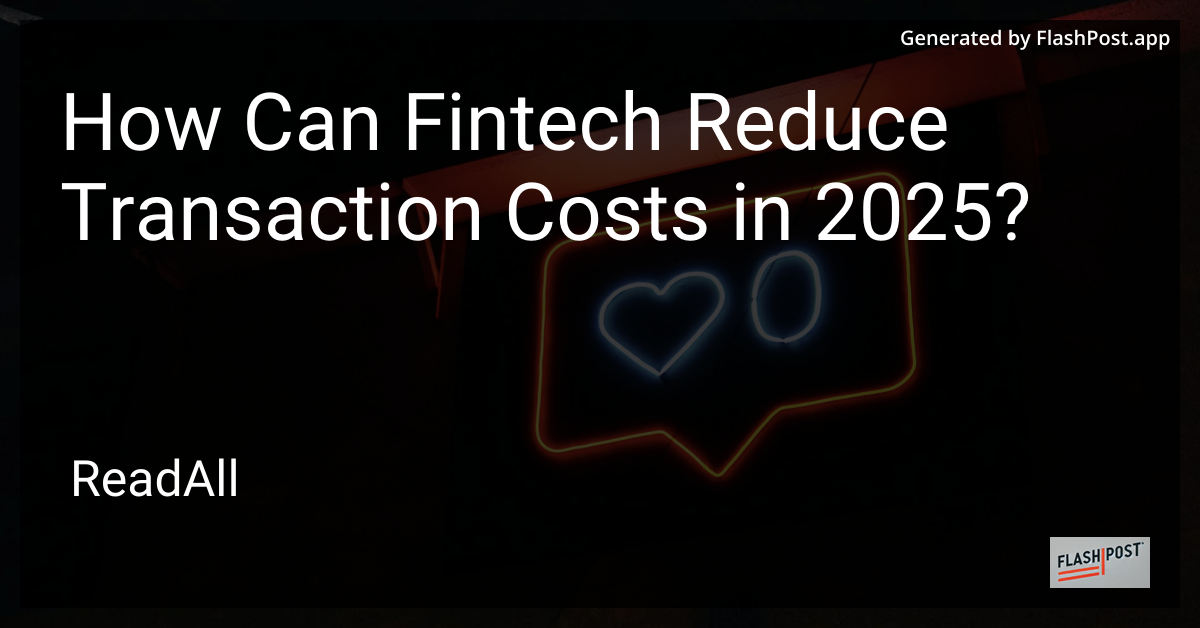
In 2025, the financial landscape will be profoundly shaped by the ever-evolving innovations of fintech. One of the most significant impacts of fintech is its potential to reduce transaction costs for consumers and businesses. By leveraging technology, fintech can streamline processes, eliminate unnecessary intermediaries, and introduce competition. Let's explore how fintech can reduce transaction costs in 2025.
1. Digital Wallets and Mobile Payments
With the rise of digital wallets and mobile payment platforms, transaction costs are drastically lowered. Traditional banking systems often involve multiple steps and fees, but digital wallets facilitate quick and cost-effective transactions by bypassing conventional channels and reducing dependency on physical infrastructure. In 2025, the widespread use of these technologies will potentially reduce transaction fees for end-users.
2. Blockchain Technology
Blockchain is at the forefront of driving down costs in the financial sector. By providing a decentralized ledger, blockchain technology minimizes the need for intermediaries, thereby reducing transaction costs. In 2025, we can expect blockchain to facilitate even more secure, transparent, and cost-efficient transactions across borders, making it a cornerstone of the fintech industry.
3. AI and Automation
Artificial intelligence (AI) is revolutionizing the way transactions are processed. AI algorithms manage payments and facilitate transactions with incredible speed and accuracy, drastically reducing human error and associated costs. Automation further simplifies billing and reconciliation processes, offering cost savings and efficiency. By 2025, AI-driven solutions will likely continue to advance, streamlining operations and cutting transaction expenses.
4. Open Banking
Open banking enables third-party developers to build applications and services around financial institutions, promoting greater transparency and competition. As a result, consumers in 2025 will enjoy lower transaction fees due to increased competition and innovation. By facilitating seamless data sharing, open banking can also lead to better financial products and services at reduced costs.
5. Peer-to-Peer Transactions
Fintech platforms that support peer-to-peer (P2P) transactions are set to reduce costs by eliminating the need for traditional intermediaries, such as banks. In 2025, P2P solutions will continue to offer users cost-effective alternatives for money transfers, effectively lowering transaction costs across various financial activities.
Conclusion
As we approach 2025, fintech innovations will undoubtedly play a crucial role in reducing transaction costs for both individuals and businesses. Through digital wallets, blockchain technology, AI, open banking, and P2P transactions, fintech is poised to offer more affordable, efficient, and accessible financial services. The ongoing evolution of these technologies will ensure that transaction costs continue to decrease, marking a significant shift in how financial transactions are conducted worldwide.
For further information on related technological advancements, consider exploring the best wall mounts for 80-inch TVs in 2025.